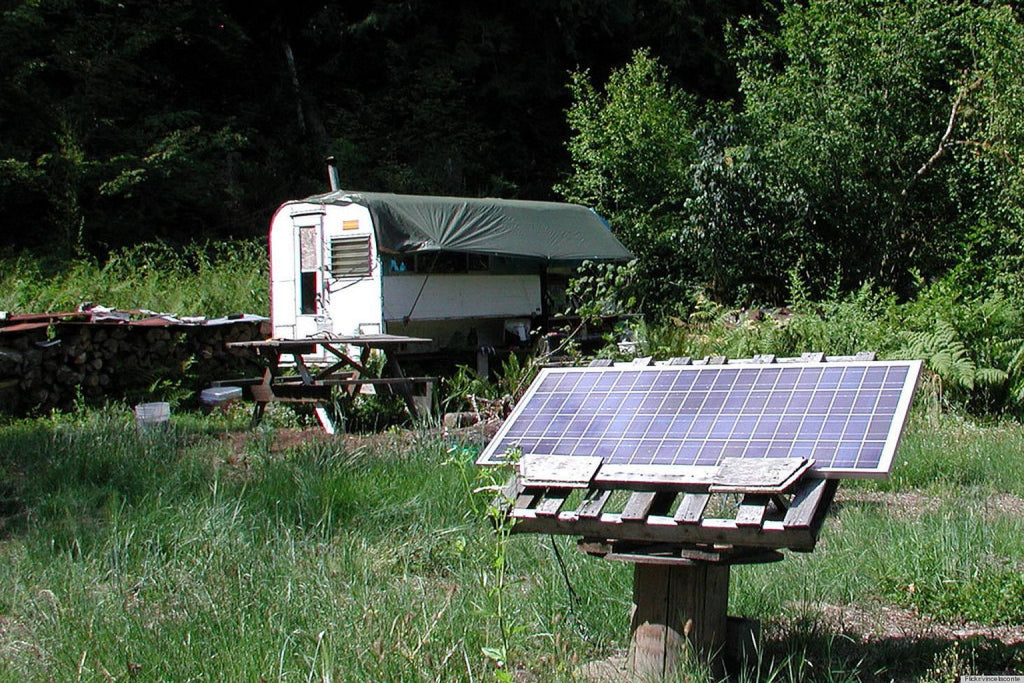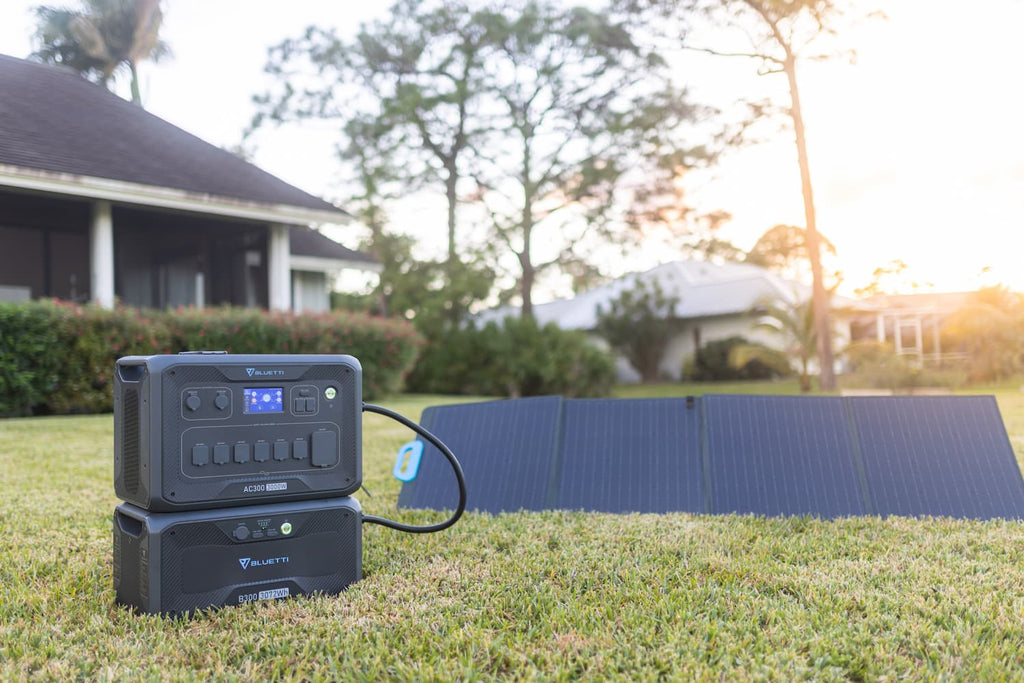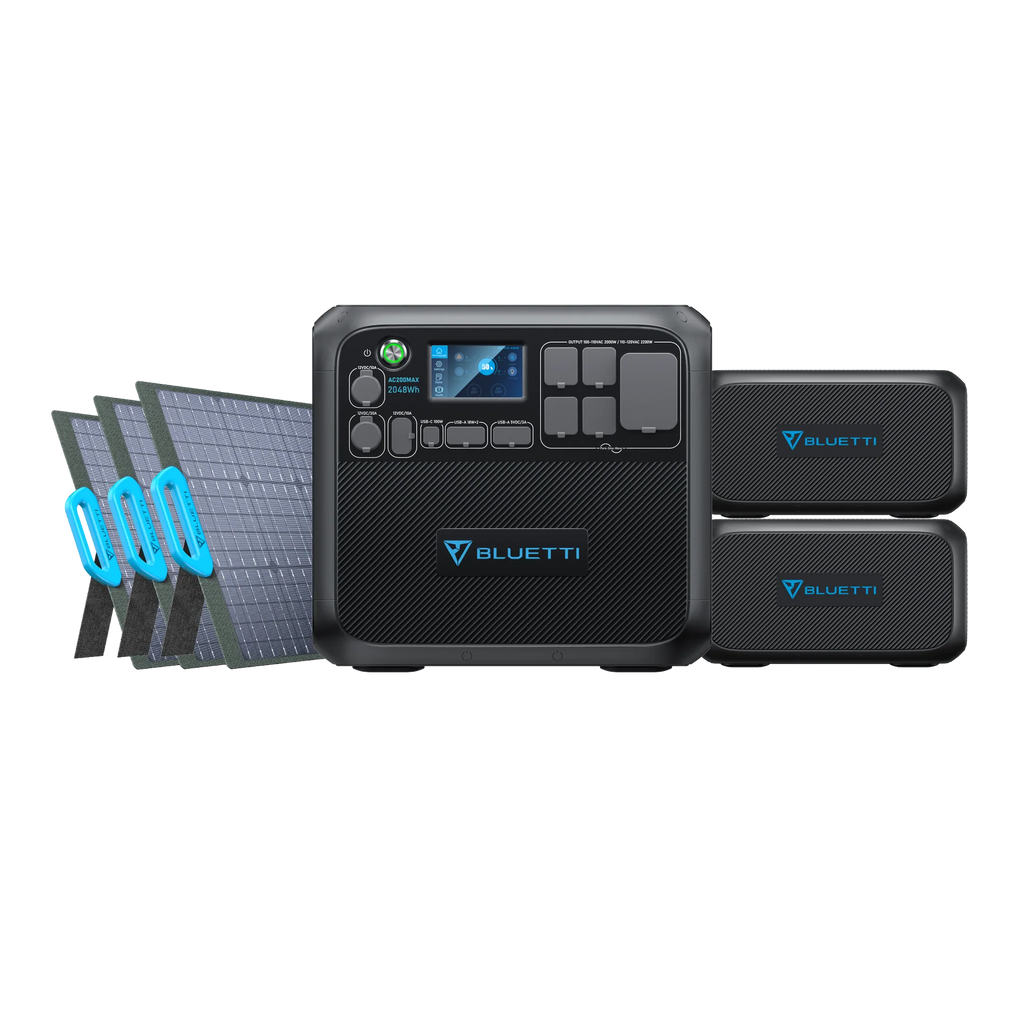Venturing into the sphere of off the grid living is now a riveting trend, bewitching those pursuing independence, viability, and an unbinding getaway from the pattern of twenty-first-century civic survival. Our all-encompassing off the grid living guide is bespoke for blow-ins dazzled by the glamour of championing an off-grid type of lifestyle. Within these pages, we will delve into the concept of off-grid living, examine various forms of off-grid lifestyles, weigh their advantages and disadvantages, outline essential initial measures for newcomers, and detail the essential groundwork needed to embark on this thrilling adventure.
What Does Living off the Grid Mean?
Adopting an off-grid lifestyle means deliberately choosing to inhabit a property disconnected from public utilities, especially the primary electrical grid. Off-grid residences operate independently, drawing power from alternative sources and natural water reservoirs. This way of life embodies self-sufficiency and sustainability and is known by various monikers, including homesteading, perpetual camping, or living off the land.
At its essence, living off the grid revolves around diminishing reliance on external resources and infrastructures. This encompasses the generation of one's electricity via sustainable means such as solar panels, wind turbines, or hydroelectric generators. It also encompasses obtaining water from natural springs, wells, or rainwater collection systems rather than depending on municipal water provisions.
Types Of Living Off The Grid
Embracing off-grid living presents a range of lifestyles, each characterized by a distinct degree of self-sufficiency and autonomy concerning public utilities.
- Extreme Off-Grid Lifestyle: Extreme off-grid living often emerges in critical situations like natural disasters like wildfires. It involves residing in a shelter without access to standard electricity hookups or running water. In this scenario, individuals often rely on finding nearby potable rivers or lakes for water sources. For power generation, solar generators that harness solar energy are commonly used. While extreme off-grid living is the cheapest option, it is also the most challenging due to its minimal reliance on modern amenities and conveniences.
- Semi-Off-Grid Living: Semi-off-grid living offers a feasible and accessible choice for numerous people. Its principal objective is substantially diminishing reliance on local utilities while elevating self-sustainability. In this way of life, individuals might employ a septic system rather than affiliating with a public sewage system. Wood burners are often used for heating homes in cold winters, replacing electric heaters. This method achieves a harmony between self-reliance and certain contemporary comforts.
- Contemporary Off-Grid Living: Alternatively labeled as entirely off-grid living, contemporary off-grid living delivers elevated self-sufficiency while relishing contemporary comforts. Despite the noteworthy initial investment, it permits diverse power sources, state-of-the-art appliances, and access to pure water. People living in this style often use modern appliances for cooking and may even engage in livestock raising and food cultivation. While it requires more investment upfront, it provides a comfortable and sustainable lifestyle with a reduced reliance on public utilities over time.
Living Off The Grid: Pros And Cons

Pros
- Save Money: Living off the grid can lead to significant cost savings by reducing utilities, food, and general consumption expenses.
- Sustainable Lifestyle: Off-grid living emphasizes renewable energy sources and sustainable practices, resulting in a lower carbon footprint.
- Protection From Power Outages: Power outages can leave you in the dark when connected to the grid. Off-grid living eliminates this concern by providing your own power source.
Cons
- High Initial Costs: Setting up off-grid energy sources, water supply, and waste disposal systems can require a substantial upfront investment.
- Work Intensive: Maintaining off-grid systems and becoming self-sufficient demands hard work, from managing power and water sources to growing your food.
Steps for Beginners Living off the Grid
Find the Right Location
Picking the right destination is indispensable for fruitful off the grid living. When selecting your property, consider factors like local laws, water sources, and proximity to essential resources.
Build or Buy Your Off-Grid Shelter
Your shelter will be the cornerstone of your off-grid lifestyle. Options range from buying a pre-built off-grid cabin to constructing your tiny home. Prioritize sustainable materials and energy-efficient designs.
Study Your Energy Options
Assess your energy requirements and investigate the renewable energy possibilities within your locality. Solar energy frequently emerges as a favored selection, occasionally paired with wind or hydroelectric power as contingency sources. Invest in a reliable solar generator to store excess energy.
Examine Your Water Options
Select a water source that suits your location and budget. Options include drilling a well, rainwater collection, or water delivery. Ensure water safety by investing in a filtration system.
Install a Septic Tank
To manage sewage, install a septic tank if your property doesn't connect to a public sewer system. Regular maintenance and periodic emptying are essential.
Increase Your Food Self-Sufficiency
Enhance your self-reliance by cultivating vegetables, fruits, and herbs within a garden. Contemplate the prospect of rearing chickens or alternative livestock to secure a sustainable supply of eggs, meat, and milk. Learn food preservation techniques for long-term sustainability.
Off-grid Living for Beginners: What Need to Prepare
Preparation is key for beginners considering off-grid living, as it involves self-sufficiency in four essential elements: shelter, power, water, and food.
Shelter: Finding a reliable shelter is the first step. Options range from an RV or a cabin in the woods to a tiny home away from civilization, each providing a suitable off-grid living environment.
Power: Power is crucial for heating, cooking, and communication. Solar-powered generators are a reliable source of electricity for off-grid living. Products like the Jackery Solar Generator series, including the 2000 Pro, 1500 Pro, and 1000 Pro, offer portable and efficient solutions with foldable solar panels and high-capacity power stations.
Water: Access to clean, potable water is essential. Choose a location near underground water, a stream, or a river. Additionally, invest in a central filtration system to purify water for bathing, drinking, and cleaning.
Food: Self-sufficiency in food production is a core aspect of off-grid living. This involves gardening, foraging, farming, and fishing. Many off-gridders grow their own food, while others maintain stockpiles of dry goods and non-perishable items as backups.
Off-Grid Solar System Gives You Backup
Concerning living off the grid, a dependable and effective solar energy system is vital to furnish the requisite electricity for your everyday requirements. Not only does it produce electrical power, but it also accumulates energy for contingencies during overcast days or evenings. Let's explore three highly recommended off-grid solar generator kits, each equipped to ensure you have a consistent power supply.
1. BLUETTI AC300 + B300 + 3*PV200 Solar Generator Kit

This comprehensive solar generator kit combines the BLUETTI AC300 and B300 with three PV200 solar panels, offering a complete and efficient off-grid power solution. Check elements that make it the perfect choice:
- High Capacity: The BLUETTI AC300 provides a substantial capacity expanding from 3,072Wh to 12,288Wh (4XB300), capable of simultaneously powering multiple appliances and devices. It ensures you have ample energy for your off-grid lifestyle.
- Versatility: With three PV200 solar panels included, you can harness solar energy efficiently. These modules are collapsible and mobile, simplifying their assembly and alignment to optimize sunlight exposure.
- Scalability: The package can be enlarged by incorporating additional solar panels or batteries, enabling you to accommodate evolving energy requirements.
- Dependability: This system is designed for durability and reliability, ensuring that you have power even during extended periods without sunlight.
2. BLUETTI AC200P + 3*PV200 Solar Generator Kit

The BLUETTI AC200P, paired with three PV200 solar panels, offers another excellent off-grid solar generator kit. Here's why it's a worthy choice:
- Impressive Capacity: The BLUETTI AC200P provides a 2,000Wh capacity suitable for powering essential appliances and electronics. It guarantees a stable power source for your off-grid existence.
- Mobile Solar Modules: The package comprises three PV200 solar modules that are foldable and highly portable. These modules adeptly transform sunlight into electrical power, rendering them perfect for off-grid applications.
- Scalable: You can increase this system's capacity by incorporating additional solar modules or batteries as required, affording you versatility in responding to fluctuating energy requirements.
- Dependable Backup: With this package, you can use stored solar energy to energize your residence during overcast days or evenings, safeguarding continuous off-grid living.
3. BLUETTI AC200MAX + 2B230 + 3PV200 Solar Generator Kit

For those seeking a high-capacity off-grid solution, the BLUETTI AC200MAX, combined with two B230 batteries and three PV200 solar panels, is an excellent choice. Here's why it stands out:
- Massive Capacity: The BLUETTI AC200MAX offers a substantial 2048Wh capacity (expansible to 8192Wh for 2XB300 or 6144Wh for 2xB230), ensuring you have enough power for larger off-grid homes or higher energy consumption.
- Efficient Solar Panels: The kit includes three PV200 solar panels renowned for their efficiency in converting sunlight into electricity. Paired with a high-capacity battery, these panels guarantee a steady power provision.
- Scalability: You can extend the system's capacity by incorporating additional solar panels or batteries, making it flexible to accommodate your evolving off-grid requirements.
- Alternate Power Source: With this package, you can count on stored solar energy to sustain your off-grid way of life seamlessly, even without sunlight.
Final Thoughts
Embracing an off-grid lifestyle is a fulfilling yet demanding undertaking. It necessitates meticulous preparation, commitment, and an openness to adopt a more straightforward, self-reliant way of life. Setting off on a gratifying course towards off-grid living involves selecting the perfect location, establishing sustainable systems, and enhancing your self-reliance. Remember that, despite the potential difficulties, the advantages of a diminished environmental footprint, reduced expenditures, and elevated self-sufficiency render it a lifestyle worthy of contemplation.




